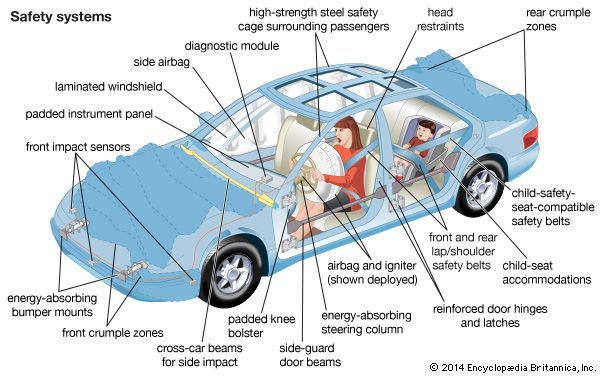Introduction
Safety is paramount when it comes to automobiles. As we journey further into the 21st century, our vehicles are equipped with an array of sophisticated features designed to keep us safe on the road. Airbags have emerged as a cornerstone of automotive safety, but they are just one piece of the puzzle. In this comprehensive guide, we will delve into the world of airbags and explore the wider spectrum of safety features that are shaping the future of automotive technology.
The Evolution of Airbags
Airbags have come a long way since their introduction. The early versions were rudimentary, single-use systems primarily for the driver. However, today’s airbags are highly advanced and diverse, serving a variety of roles in ensuring passenger safety.
- Frontal Airbags
Frontal airbags are among the most common types. They deploy in a head-on collision, protecting the driver and front-seat passengers from striking the dashboard or windshield. Modern vehicles are equipped with advanced sensors that determine the force and angle of impact to deploy the airbags with precision. - Side-Impact Airbags
In a side collision, these airbags inflate from the doors, forming a protective barrier between the passengers and the point of impact. This crucial innovation has significantly reduced the severity of injuries sustained in broadside accidents. - Curtain Airbags
Curtain airbags, or side-curtain airbags, deploy from the roof lining to safeguard passengers’ heads in side-impact collisions. These airbags are instrumental in reducing head injuries, particularly in rollovers. - Knee Airbags
Knee airbags are designed to protect the driver’s and front passenger’s knees and lower legs in a frontal crash. This feature is especially valuable in preventing leg injuries.
Beyond Airbags: Advanced Safety Features
While airbags play a vital role in automotive safety, they are just one aspect of a much broader safety ecosystem. Let’s explore some of the advanced safety features that are making our vehicles safer than ever.
- Anti-Lock Brakes (ABS)
Anti-lock brakes prevent wheel lockup during hard braking, allowing the driver to maintain control and steer the vehicle. This technology has become a standard feature in most modern cars. - Electronic Stability Control (ESC)
ESC helps prevent skidding and rollovers by applying individual brakes and modulating engine power when the vehicle is at risk of losing control. It’s a lifesaver, particularly in adverse weather conditions. - Adaptive Cruise Control
Adaptive cruise control uses sensors and cameras to adjust your vehicle’s speed to maintain a safe following distance from the car in front. It’s a significant leap towards semi-autonomous driving and can reduce the risk of rear-end collisions. - Lane-Keeping Assist
This system monitors lane markings and gently steers the car back into its lane if the driver starts to drift unintentionally. It’s a vital tool in preventing accidents caused by driver distraction or drowsiness. - Blind Spot Monitoring
Blind spot monitoring systems use radar or cameras to detect vehicles in your blind spots and provide warnings, typically through visual or auditory alerts. These systems are especially useful on highways and during lane changes. - Automatic Emergency Braking (AEB)
AEB systems use sensors to detect an impending collision and automatically apply the brakes if the driver doesn’t react in time. This technology can mitigate or even prevent accidents, saving lives and reducing the severity of collisions.
The Future of Automotive Safety
As technology continues to advance, the future of automotive safety looks promising. Here are some developments on the horizon:
- Pedestrian Detection and Protection
Advanced sensors and artificial intelligence will enable cars to not only detect pedestrians but also take evasive action to prevent accidents. - Vehicle-to-Everything (V2X) Communication
V2X communication allows vehicles to “talk” to each other and to infrastructure like traffic lights and road signs. This will enhance safety by providing real-time information and warnings to drivers. - Self-Driving Cars
While fully autonomous vehicles are still in development, they hold the promise of significantly reducing accidents caused by human error. These vehicles are equipped with numerous sensors and technologies to navigate safely.
Conclusion
The journey through the world of airbags and safety features has shown us how far we’ve come in making our roads safer. Airbags, once a novelty, are now a standard feature in vehicles worldwide. They work in concert with a host of other technologies, such as anti-lock brakes, electronic stability control, and advanced driver assistance systems, to create a comprehensive safety net for drivers and passengers.
As we look ahead, the future of automotive safety promises even more exciting developments, with pedestrian protection, V2X communication, and self-driving cars on the horizon. These innovations will continue to push the boundaries of what is possible in the quest for safer roads. In the end, it’s all about ensuring that every journey is not just a convenient one but, above all, a safe one.



